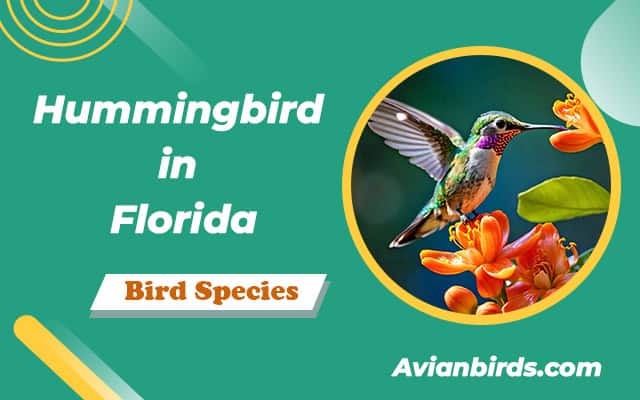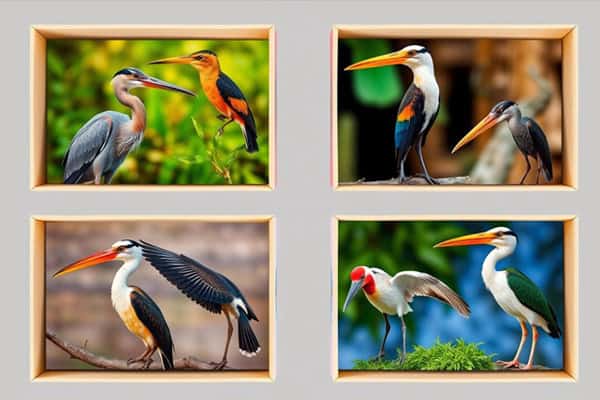9 White Birds in Florida (ID Guide with Pictures)
Florida is home to a diverse array of white birds that grace its stunning landscapes. From the majestic Great Egret to the rare Whooping Crane, these beautiful birds add an elegant touch to Florida’s natural wonders.
Main Points:
- Florida’s diverse array of white birds enhances the state’s natural beauty.
- The Great Egret is a common white bird species found in Florida.
- The rare Whooping Crane is a stunning white bird occasionally spotted in the state.
- Exploring and appreciating these white birds is a delight for bird lovers and nature enthusiasts.
- Conservation efforts are crucial to protect and preserve the habitats of these white bird species.
1. Great Egret

The Great Egret is a magnificent white bird and one of the most common bird species you’ll come across in Florida. With its stunning white plumage and long beak, it truly stands out in the avian world. This beautiful wading bird is native to Florida and can often be found in marshes and wetlands, particularly in Southeast Florida.
With its graceful appearance and elegant presence, the Great Egret is a favorite among bird watchers and nature enthusiasts. It is a sight to behold, whether it’s perched on a branch or gracefully wading through the water in search of its next meal.
One of the key features of the Great Egret is these birds have long necks and legs, which are perfectly adapted for wading in shallow waters. These birds are skilled hunters and feed on small fish, insects, and amphibians. They also build large nests out of sticks and twigs in trees near water bodies.
When it comes to breeding, the Great Egret forms large colonies known as rookeries. These rookeries are usually located in secluded areas, providing a safe space for the birds to raise their young.
It’s no wonder that the Great Egret has become such an iconic symbol of Florida’s natural beauty. Its presence in the wetlands and marshes adds to the state’s charm and allure, attracting both visitors and locals alike.
2. White Ibis

The White Ibis is another stunning white bird species found in Florida. With its curved bill and white plumage, it stands out among the diverse avian population in the state’s wetlands and mangroves. These beautiful birds, known scientifically as Eudocimus albus, can often be seen foraging along the marshy areas, feeding on crustaceans and small fish.
The White Ibis is a medium-sized bird species that is easily recognizable by its long, downward-curving bill and bright white feathers. It has long, thin legs adapted for wading through the shallow waters of the Florida wetlands. These wetlands, including the iconic Everglades, provide abundant food sources and suitable habitat for the White Ibis, making them essential to its survival.
One interesting behavior of all types of Ibis, including white ibis is its feeding technique. It uses its specialized bill to probe the muddy substrate of the wetlands, searching for small creatures like crabs, shrimp, and fish. This unique feeding behavior allows the White Ibis to thrive in the diverse ecosystems of Florida’s wetlands and mangroves.
During the breeding season, these birds gather in large colonies, building nests made of twigs and vegetation in the trees or shrubs near the water. The female White Ibis typically lays 1 to 5 eggs, which both parents take turns incubating. Once the chicks hatch, they are cared for and fed by their parents until they are ready to fledge and explore the wetlands on their own.
The White Ibis is not only a significant part of Florida’s natural beauty but also an important indicator species for the health of wetland ecosystems. Their presence signifies a thriving habitat and serves as a reminder of the importance of conserving and protecting these unique environments.
3. Great Blue Heron
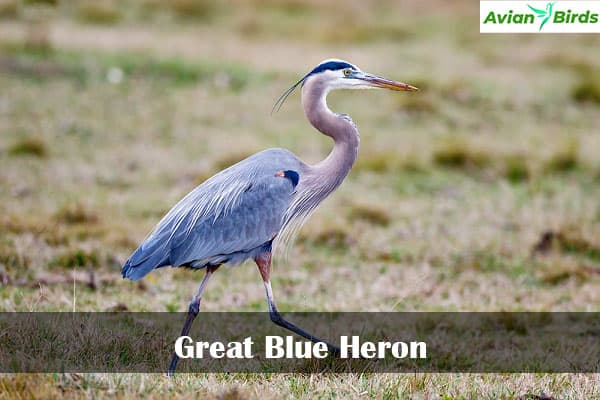
The Great Blue Heron is a graceful white bird with long legs that can be seen along the coast of Florida. With its slow, deliberate movements, it’s a favorite among bird enthusiasts. These herons of Florida often forage in shallow water, capturing fish and other small prey.
Coasting along the Shores
With its elegant stature and striking white plumage, the Great Blue Heron stands out in coastal areas of Florida. It is a wading bird found along the coastline, gracefully navigating shallow waters in search of food.
These birds with long legs are perfectly adapted for foraging in wetland areas, allowing it to reach deep into the water to catch fish and other aquatic creatures. These impressive birds have a wingspan of up to six feet, making them a majestic sight as they take flight over the coastal landscapes.
A Favorite Among Bird Enthusiasts
The Great Blue Heron’s slow and deliberate movements make it a captivating subject for birdwatchers and nature photographers. Its patient hunting technique, which involves standing still before striking at its prey, showcases its remarkable adaptability and intelligence.
Not only is the Great Blue Heron beautiful to observe, but it also plays a crucial role in maintaining the delicate balance of coastal ecosystems in Florida. As a top predator, it helps control fish populations and contributes to the overall health of the coastal habitat.
An Iconic Symbol of Coastal Florida
When exploring the coastal areas of Florida, keep an eye out for the Great Blue Heron. Its striking appearance and unique foraging behavior make it a captivating symbol of the state’s diverse wildlife.
Whether silently stalking its prey or gracefully taking flight, the Great Blue Heron is a stunning example of the natural wonders found along Florida’s shores. Its presence in coastal areas serves as a reminder of the interconnectedness of land and water ecosystems, highlighting the importance of preserving these habitats for future generations to appreciate and enjoy.
4. Snowy Egret

The Snowy Egret is a smaller white bird with yellow feet and a black bill. It is commonly found along Florida’s coastal areas, where it wades in the shallow water searching for fish and crustaceans. Its elegant plumage and distinctive yellow feet make it easily recognizable.
5. American White Pelican
The American White Pelican is a captivating sight in Florida’s freshwater lakes, particularly in the picturesque Florida panhandle. These large wading birds are known for their impressive size and unique bills, making them stand out among other avian species. With a wingspan of up to 9 feet, the American White Pelican gracefully soars above the water, captivating observers with its elegance.

Unlike their coastal counterparts, the American White Pelicans prefer the tranquility of freshwater habitats, where they can be found peacefully gliding on the surface or forming cooperative groups during feeding frenzies. These birds have adapted to thrive in the Florida panhandle’s pristine freshwater lakes, where an abundance of fish and other aquatic organisms provide a bountiful food source.
One of the distinguishing features of the American White Pelican is its massive bill, which measures about 15 inches long. This specialized tool allows them to catch prey efficiently by scooping fish near the water’s surface. Their feeding behavior is often a spectacle to behold, as these pelicans work together to corral fish into a centralized area, creating a feeding frenzy that attracts the attention of both birdwatchers and nature enthusiasts.
| Characteristics | Description |
|---|---|
| Size | The American White Pelican is one of the largest bird species in North America, with an average length of 50-70 inches and a wingspan ranging from 9 to 10.5 feet. |
| Plumage | Their plumage is predominantly white, with black flight feathers visible when in flight. During breeding season, they develop a characteristic knob on their bill. |
| Habitat | These pelicans primarily inhabit freshwater lakes, ponds, and marshes. In Florida, they are particularly prevalent in the inland areas of the Florida panhandle. |
| Migratory Pattern | The American White Pelicans are migratory birds, with populations in Florida typically remaining in the state year-round. |
| Nesting | They construct large, shallow nests made of sticks and vegetation, typically in secluded areas near water bodies. Breeding colonies can host hundreds or even thousands of pairs. |
The American White Pelican is not only a remarkable species of bird but also an indicator of the remarkable biodiversity found in Florida’s freshwater ecosystems. Its presence serves as a reminder of the importance of protecting and conserving these habitats to ensure the survival of these magnificent creatures.
6. Whooping Crane
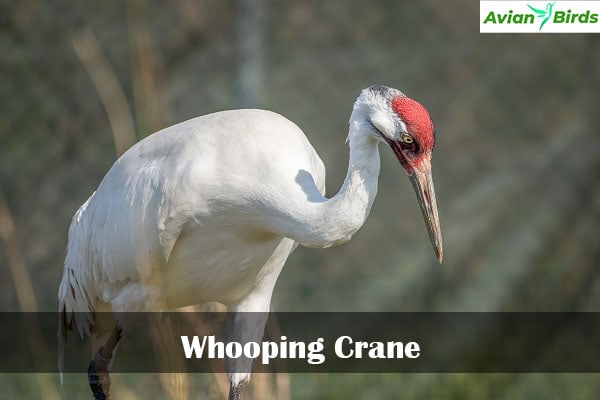
The Whooping Crane is a rare and endangered white bird species that can sometimes be spotted in Florida. With its stunning white plumage and majestic presence, this bird is a true gem. While sightings are rare, the efforts to protect and preserve this species continue in Florida.
Other White Birds in Florida
In addition to the previously mentioned white birds, Florida is also home to other beautiful white species. These birds contribute to the diversity and natural beauty of the state. Let’s explore some of these fascinating white bird species:
7. Cattle Egret

The Cattle Egret is a medium-sized white bird with a yellow bill and legs. It is commonly found in open grasslands and agricultural fields, where it feeds on insects, small mammals, and reptiles. This egret is known for its habit of following cattle and other large animals to catch insects disturbed by their movement.
8. Wood Stork
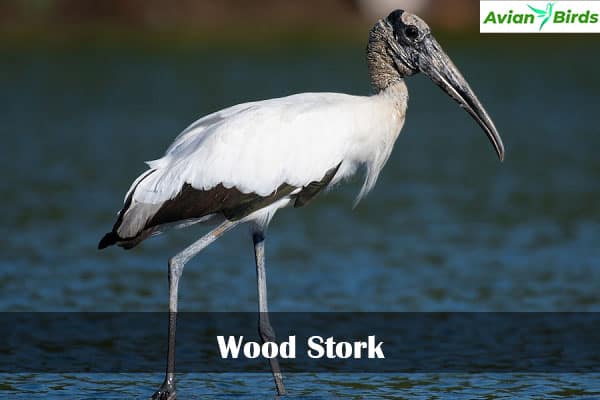
The Wood Stork is a large wading bird that is mostly white with black flight feathers. It can be found in wetlands and marshes, where it forages for fish, amphibians, and insects. The wood stork has a distinct bald head and long, curved bill, making it easily distinguishable from other white bird species.
9. Little Blue Heron
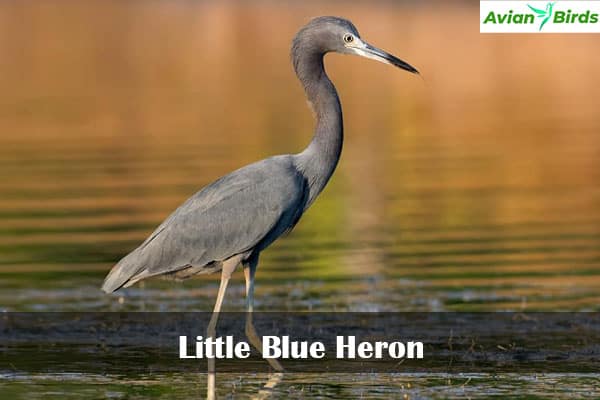
The Little Blue Heron may seem like an odd inclusion in a list of white birds, but it starts its life as a white bird before transitioning to its adult plumage. Juvenile little blue herons are pure white and gradually develop their blue-gray plumage as they mature. These herons can be found in various habitats, including wetlands, swamps, and estuaries, where they feed on fish, small reptiles, and insects.
These white bird species, along with the others mentioned in previous sections, showcase the remarkable avian diversity found in Florida. Their presence adds to the beauty of the state’s natural landscapes and serves as a testament to the importance of preserving and protecting their habitats.
| White Bird Species | Description |
|---|---|
| Cattle Egret | A medium-sized white bird with yellow bill and legs. Commonly found in open grasslands and agricultural fields. |
| Wood Stork | A large wading bird with a distinct bald head and long, curved bill. Mostly white with black flight feathers. |
| Little Blue Heron | Starts as a pure white bird in its juvenile stage and gradually develops blue-gray plumage as it matures. Found in wetlands, swamps, and estuaries. |

The birds in Florida have attracted countless bird-watching enthusiasts. If you are one of them, you can express your love for rare birds in various ways. For example, you can design a picture book to record those birds that can still be seen or are endangered or extinct. You can also design Custom Pins walls to make your home feel like there is a natural museum.
White Birds in Different Regions of Florida
Florida is home to a diverse range of white birds, and they can be found in various regions throughout the state. From the beautiful coastal areas to the unique habitats in Southwest Florida and the Florida Keys, these regions provide an ideal environment for these magnificent birds.
Must Visit: Michigan Duck Hunting Season Dates & Tips
Coastal regions are particularly popular among white birds in Florida due to the abundance of food sources and suitable nesting habitats. These areas offer a rich ecosystem that supports a thriving population of white birds, including the iconic Great Egret, White Ibis, and Snowy Egret.
In Southwest Florida, you’ll discover a multitude of bird-watching opportunities. The region’s diverse wetlands and marshes attract numerous white bird species, making it a haven for bird enthusiasts. Keep an eye out for the elegant Great Blue Heron, known for its long legs and graceful movements.
Another region where white birds can be spotted is the Florida Keys. This chain of islands provides an array of habitats, from mangroves to sandy beaches, attracting a variety of white bird species. As you explore the area, you may encounter the American White Pelican, a majestic bird that soars above the water with its impressive wingspan.
Coastal Regions
The coastal regions of Florida offer an ideal habitat for white birds. The combination of marshes, mangroves, and shallow waters provides ample food sources and nesting grounds. Coastal areas are especially popular during the breeding season when these birds congregate to build nests and raise their young. It’s a sight to behold.
Southwest Florida
With its diverse wetlands and marshes, Southwest Florida is a paradise for white birds. It’s a region where you can observe these birds in their natural habitat, going about their daily activities. The peaceful surroundings and unique ecosystems make it a prime destination for bird-watching.
Florida Keys
The Florida Keys are a hidden gem for white bird enthusiasts. Whether you’re exploring the mangroves or strolling along the sandy beaches, you’re likely to encounter these graceful birds. The Keys offer a tranquil escape where you can marvel at the beauty of nature and the abundance of white birds.
White Birds in Florida During Different Seasons
The presence of white birds in Florida can vary depending on the season. While some species are permanent residents, others are migratory birds that visit the state during specific times of the year. Summer and winter offer different opportunities to spot these stunning white birds.
Also read: White Birds In Michigan.
During the summer months, Florida becomes a haven for white birds. The warm weather, abundant food sources, and thriving wetlands attract a wide range of species. White birds such as the Great Egret, White Ibis, and Snowy Egret can be seen throughout the state, especially in coastal regions and wetland areas. These birds take advantage of the favorable climate and rich feeding grounds to raise their young and flourish.
In contrast, winter brings a different set of white birds to Florida. Many species from colder northern regions migrate south to escape harsh winter conditions. These migratory birds include the striking American White Pelican and the majestic Whooping Crane. They seek refuge in Florida’s milder climate and find sanctuary in the state’s wetlands and coastal areas. Winter is a prime time to witness the beauty of these migratory white birds as they join the resident species and create a remarkable sight.
Whether it’s the bustling energy of summer or the tranquil presence of winter, Florida offers a unique glimpse into the lives of white birds throughout the year. From the vibrant plumage of summer residents to the rare sightings of migratory species, each season brings its own opportunity to appreciate the diversity and beauty of these magnificent creatures.
| Season | Featured White Birds |
|---|---|
| Summer | Great Egret White Ibis Snowy Egret |
| Winter | American White Pelican Whooping Crane |
Conservation Efforts for White Birds in Florida
Conservation plays a vital role in protecting and preserving the diverse white bird species found in Florida. Through dedicated efforts, organizations and individuals strive to safeguard the habitat of these beautiful birds and raise awareness about their importance.
Also read: Are Red Peacock Real or Fake?
Preserving Habitat
One of the key focuses of conservation efforts is the preservation of the natural habitat of white bird species in Florida. Wetlands, marshes, mangroves, and coastal areas are crucial ecosystems that provide food and shelter for these birds. Conserving and restoring these habitats ensures a sustainable environment for white bird populations to thrive.
“By protecting the habitats of these white bird species, we can help maintain their populations and ensure the continued presence of these magnificent birds in Florida.”
Collaborative Initiatives
Conservation efforts are often collaborative endeavors involving government agencies, non-profit organizations, researchers, and local communities. These partnerships work together to implement conservation strategies, conduct scientific studies, and educate the public about the importance of white bird species in Florida’s ecosystem.
Raising Awareness
Creating awareness about the significance of white bird species and the need for their conservation is crucial. Public outreach programs, educational campaigns, and guided tours help people understand the importance of preserving these birds and their habitats. By fostering a sense of appreciation and responsibility, conservationists encourage individuals to take action to protect white bird populations.
Monitoring and Research
Continuous monitoring and research efforts are vital for studying white bird populations, their behavior, and the factors affecting their well-being. By gathering data on breeding patterns, migration routes, and habitat preferences, researchers can develop targeted conservation strategies and track the success of these initiatives over time.
| Conservation Efforts | Key Focus Areas |
|---|---|
| Habitat Preservation | Protecting wetlands, marshes, mangroves, and coastal areas. |
| Collaborative Initiatives | Working together across organizations and communities. |
| Raising Awareness | Educating the public about the importance of white bird species. |
| Monitoring and Research | Gathering data to develop targeted conservation strategies. |
Wrapping Up…
Florida’s white birds grace the state’s landscape with elegance. They showcase Florida’s avian diversity, from the majestic Great Egret to the rare Whooping Crane. Appreciating these birds is a joy for nature enthusiasts. Their beauty enriches Florida’s wetlands, coasts, and lakes. Conservation efforts ensure future generations can admire these wonders. If you’re interested in buying bird foods or related products, then A bird shop is supporting wild conservation. link is here (https://www.birdcagelab.com/)
Do you know about The Most Colorful Birds Around The World, as well as the Florida Birds Of Prey
FAQs:
Q1: How frequently are white birds spotted in Florida during summer and winter?
The presence of white birds in Florida can vary depending on the season. While some species are permanent residents, others are migratory birds that visit the state during specific times of the year. Summer and winter offer different opportunities to spot these stunning white birds.
Q2: What are some common white birds found in Florida?
Some common white birds found in Florida include the Great Egret, White Ibis, Great Blue Heron, Snowy Egret, American White Pelican, and more. These birds contribute to the diversity and natural beauty of the state.
Q3: Where can I spot white birds in Florida?
White birds can be found in various regions of Florida, from the southwest part of the state to the Florida Keys. Coastal regions are especially popular among these birds due to the abundance of food sources and suitable habitat.
Q4: What are some key characteristics of white birds in Florida?
Many white birds in Florida have long beaks, long legs, and plumage that is mostly white. They are typically wading birds and can be seen foraging in marshes, wetlands, and coastal areas. Some species, such as the Snowy Egret, have distinctive yellow feet and black bills.
Q5: Why are white birds protected and conserved in Florida?
Conservation efforts play a crucial role in protecting and preserving white bird species in Florida. These efforts aim to safeguard their habitats and promote awareness about the importance of preserving these beautiful birds and their diverse avian life within the state.
You Must Might be interested to read: 21 Facts About Crows


